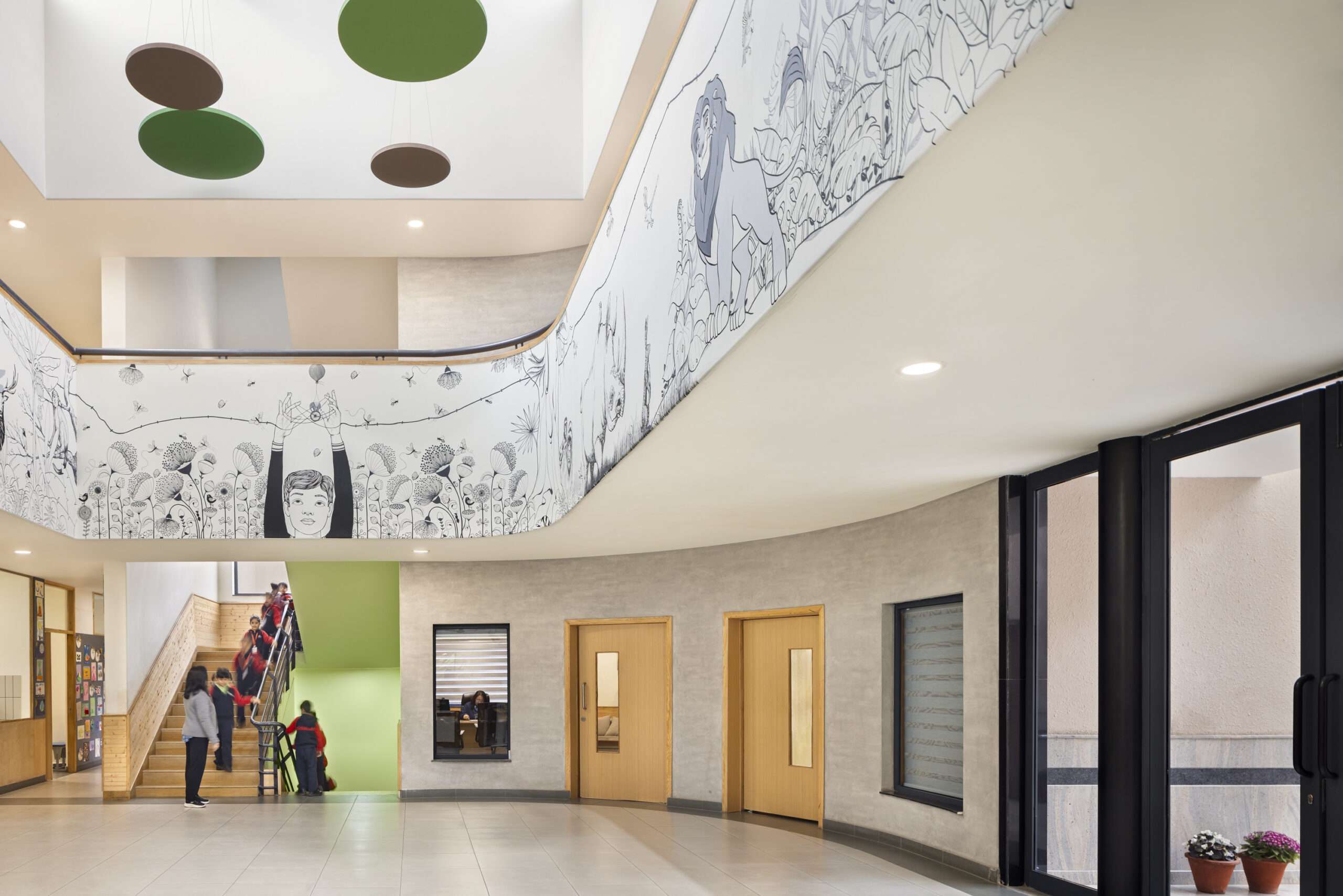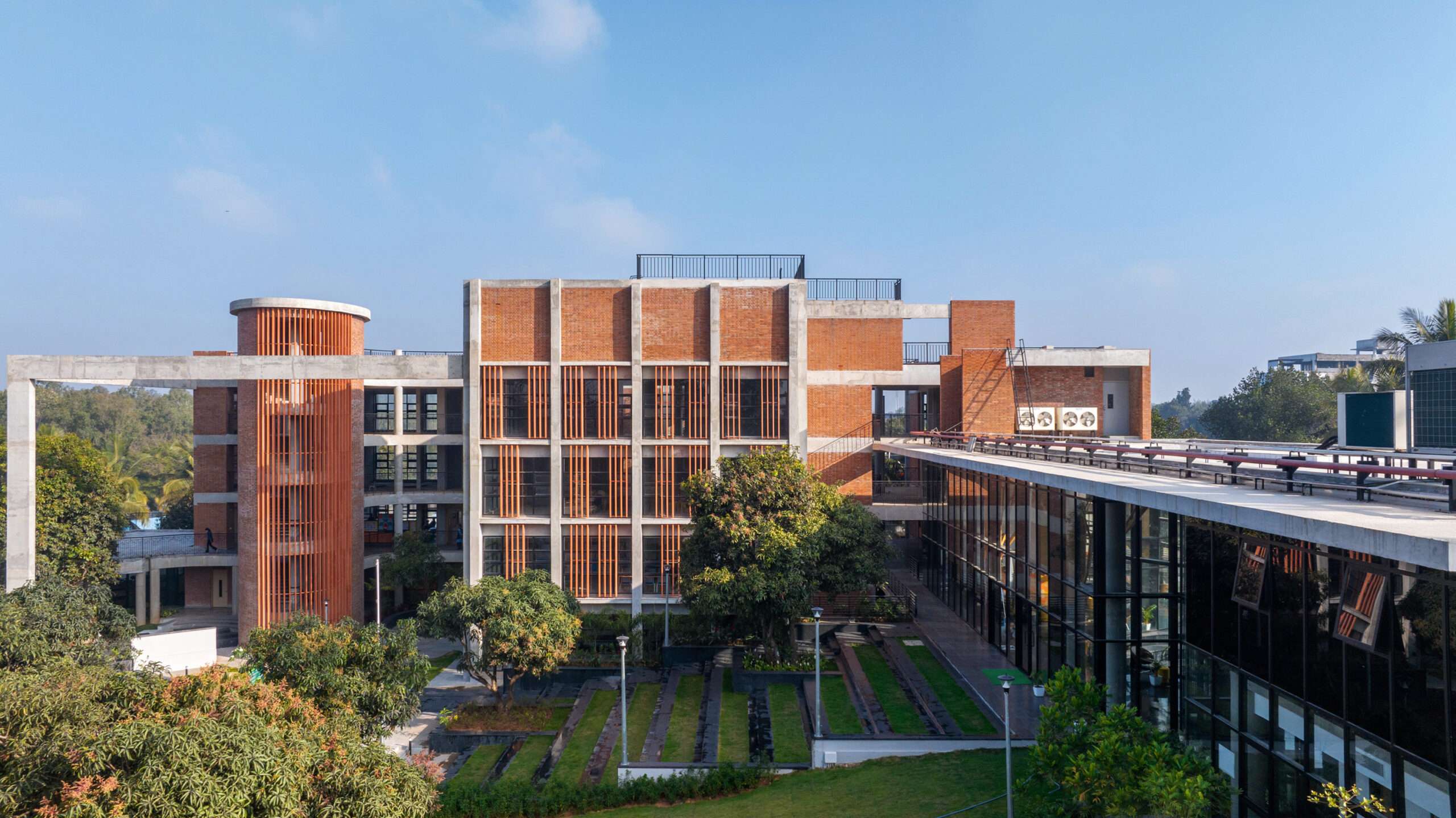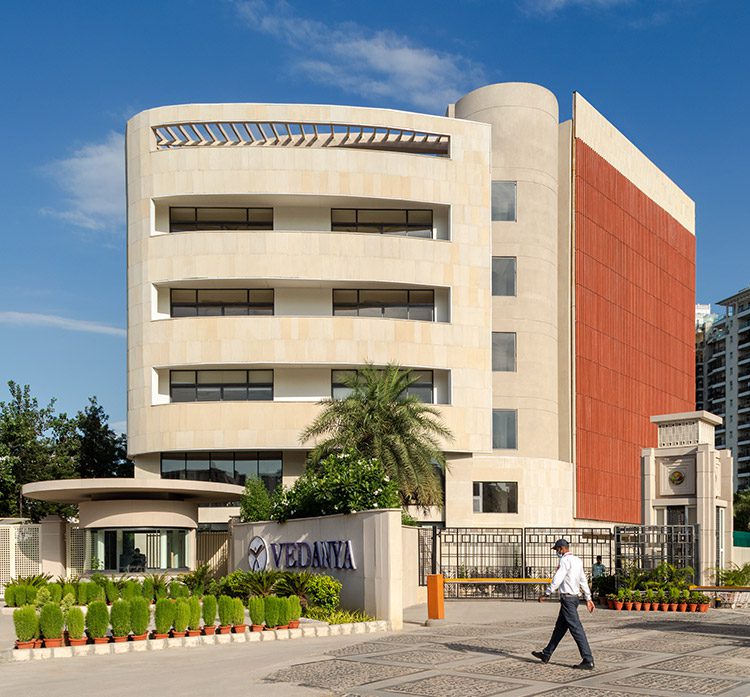Reinventing the School Morphology
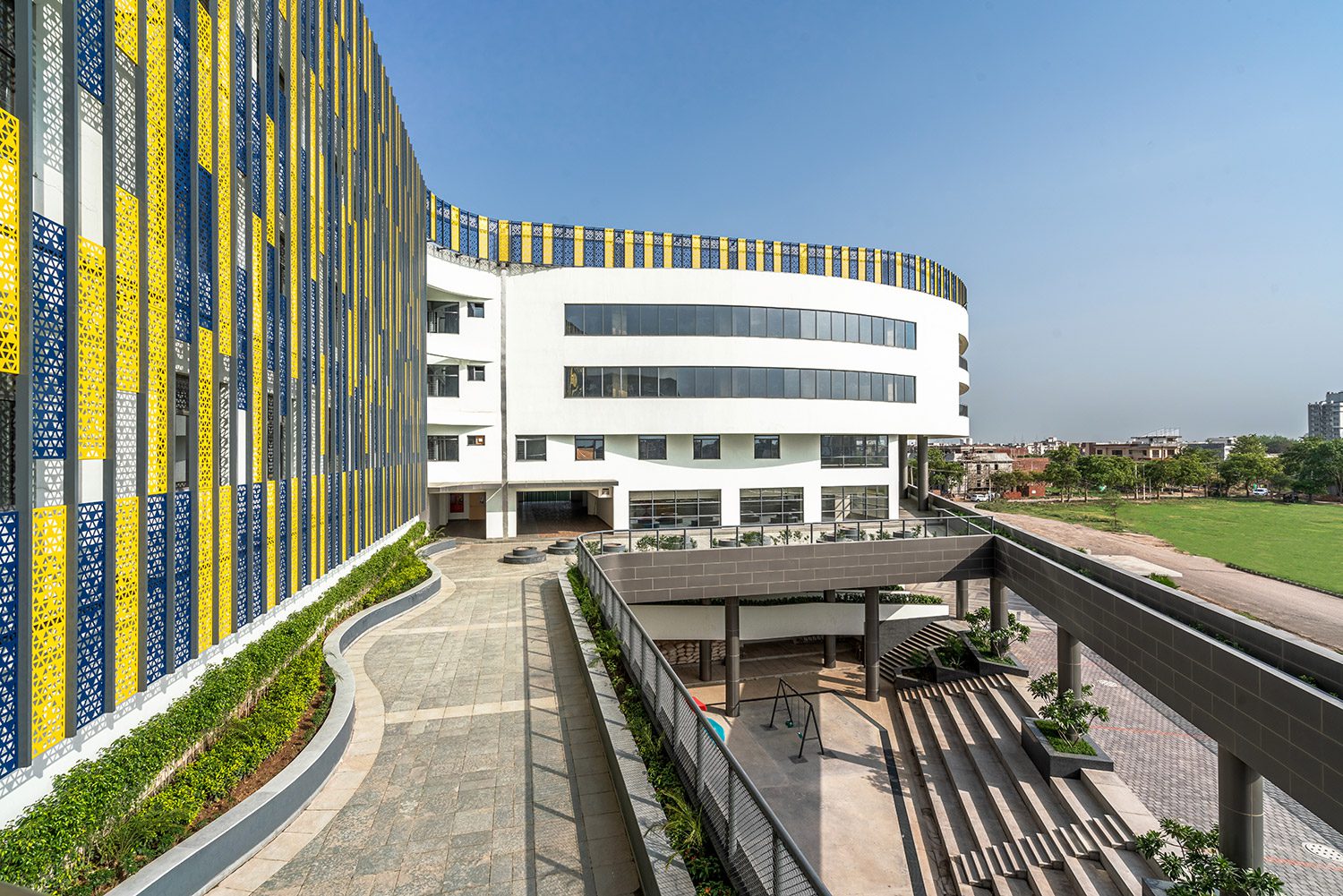
Learning environments play a pivotal role in a child’s life by creating a conducive character for overall growth and development. Spaces can create memories and enhance the learning experience greatly. The innovative approach to design for the Amity International School in Mohali, Punjab, attempts to go beyond the rigid morphology of educational spaces and planning. Drawing inferences from efficient models of tackling urban density, the complex seeks to embody a progressive spirit by rethinking the design of conventional school complexes.
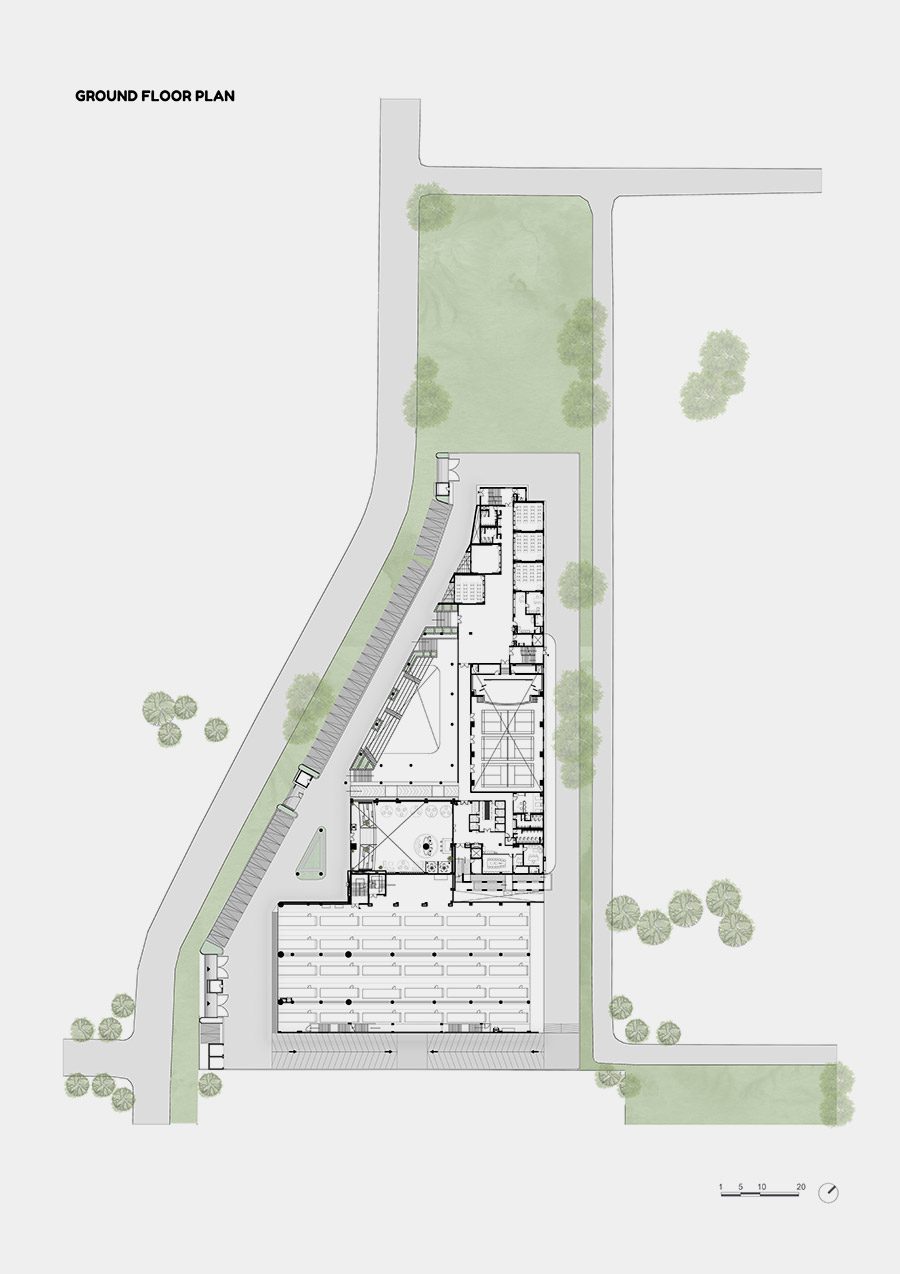
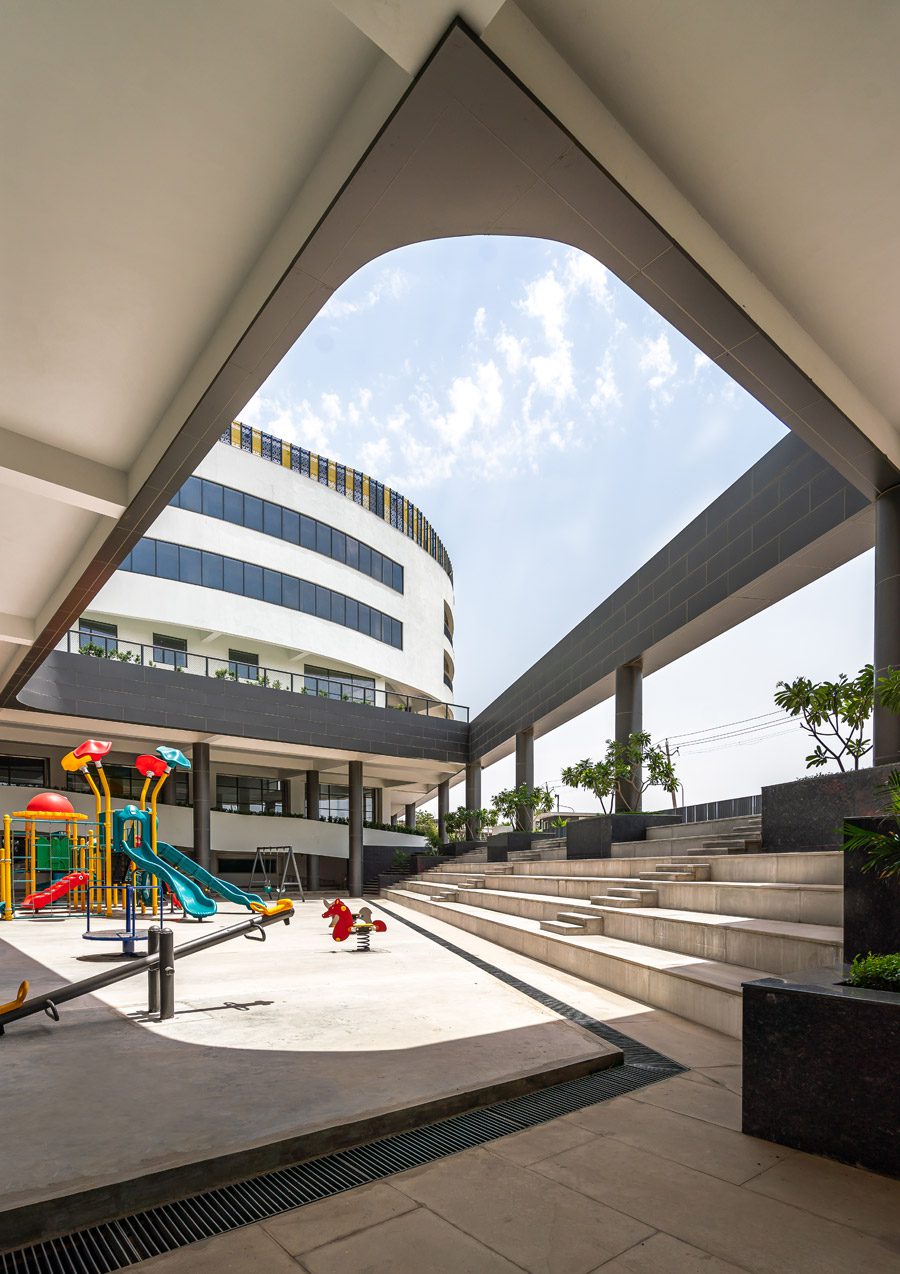
The site posed several challenges in terms of size, orientation and surroundings, which were ingeniously navigated, while developing a distinctive design scheme. Research has shown that open spaces are equally important for the growth and development of children. To balance open space requirements within the tight urban constraints, the playground has been lifted to the podium level, leaving the ground free for bus and vehicular movement . A large landscaped terrace integrates with the playground to create a large breakout space for the students. In addition, a large play area specifically for smaller children has been created at the lower ground level. Within the built envelope, covered breakout spaces are provided at each level of the five-storey structure, enabling spaces for engagement, exploration and relief at several Junctures.
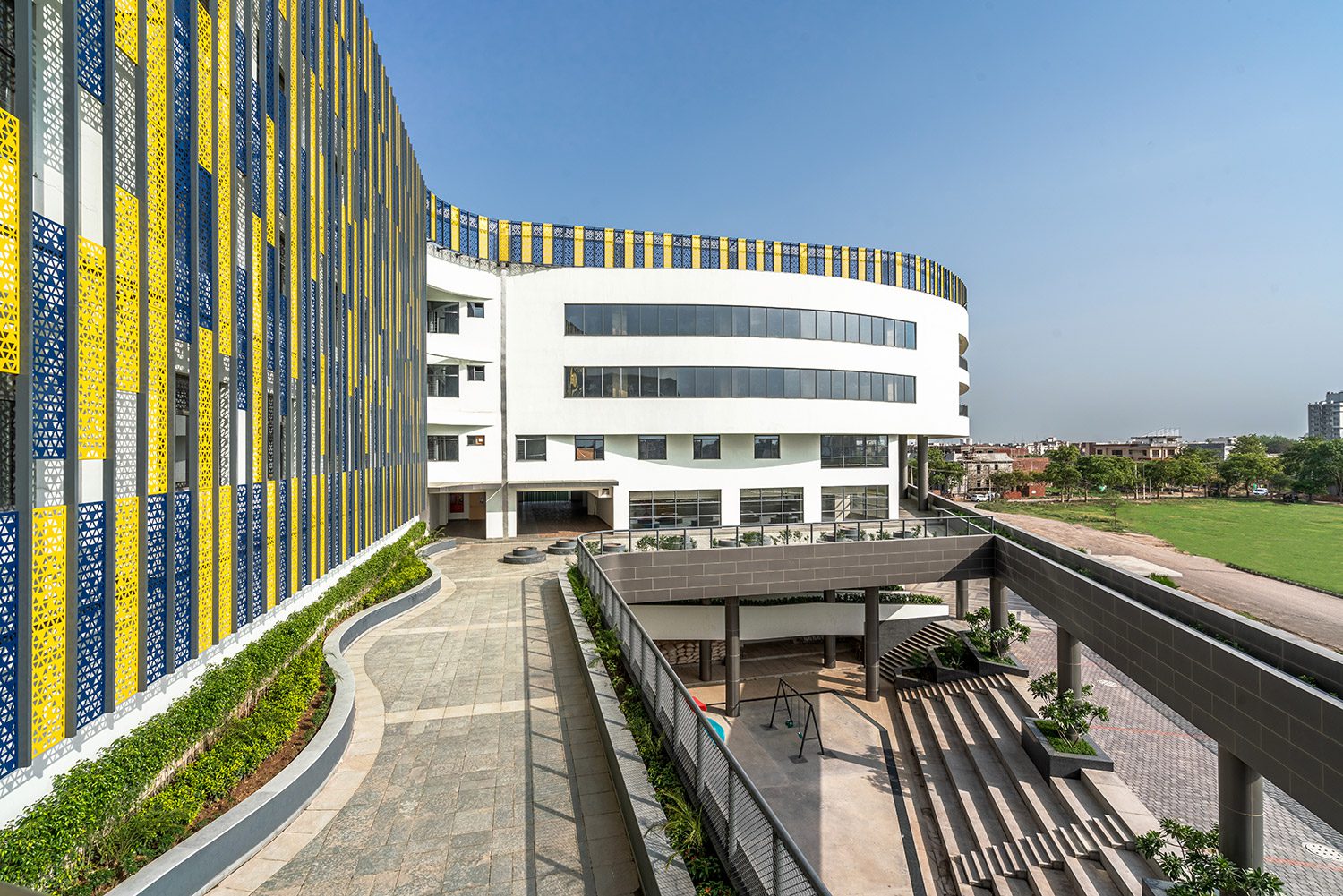
While formal environments can help focus better, informal areas are just as important and contribute significantly to the learning process. Based on this principle, the Amity International School encapsulates ample playgrounds, shaded walkways, play areas, and open and semi-open spaces across floors, forging engaging and exploratory spaces at several Junctures.
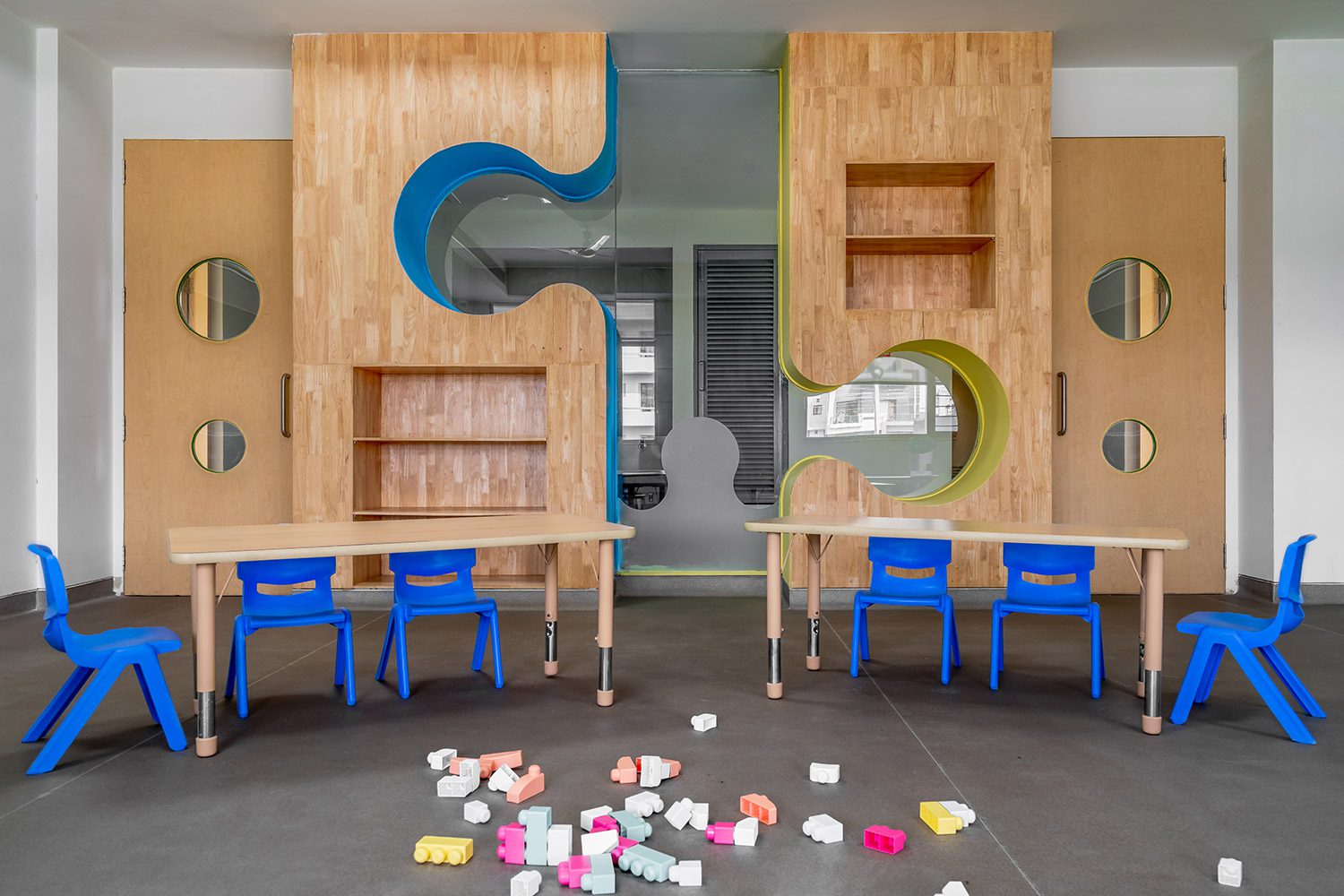
A playful mix of punctures and louvres lightens the visual load of the imposing five-storey structure. These façade elements are planned to allow natural light in all spaces throughout the campus. One of the most prominent details of the project are the colorful metal panels that wrap around the built form on the southern side. Made out of laser-cut aluminium sheets and strategically placed to protect the building from the harsh southern sun, this fluid envelope of blue and yellow asserts a distinct visual identity to the complex. The organic form of the building infuses playfulness and provides a break in the otherwise rigid urban structure. The facades are a perfect example of functionality and aesthetics, as they allow the building to be climate-responsive while establishing a distinct visual identity. The interior material palette provides a rich sensory experience through the use of rubber wood panels along with subtle use of colours. Puzzle shaped wooden partitions play peekaboo with students as they move along the corridor while enabling visual connectivity within spaces at all times.
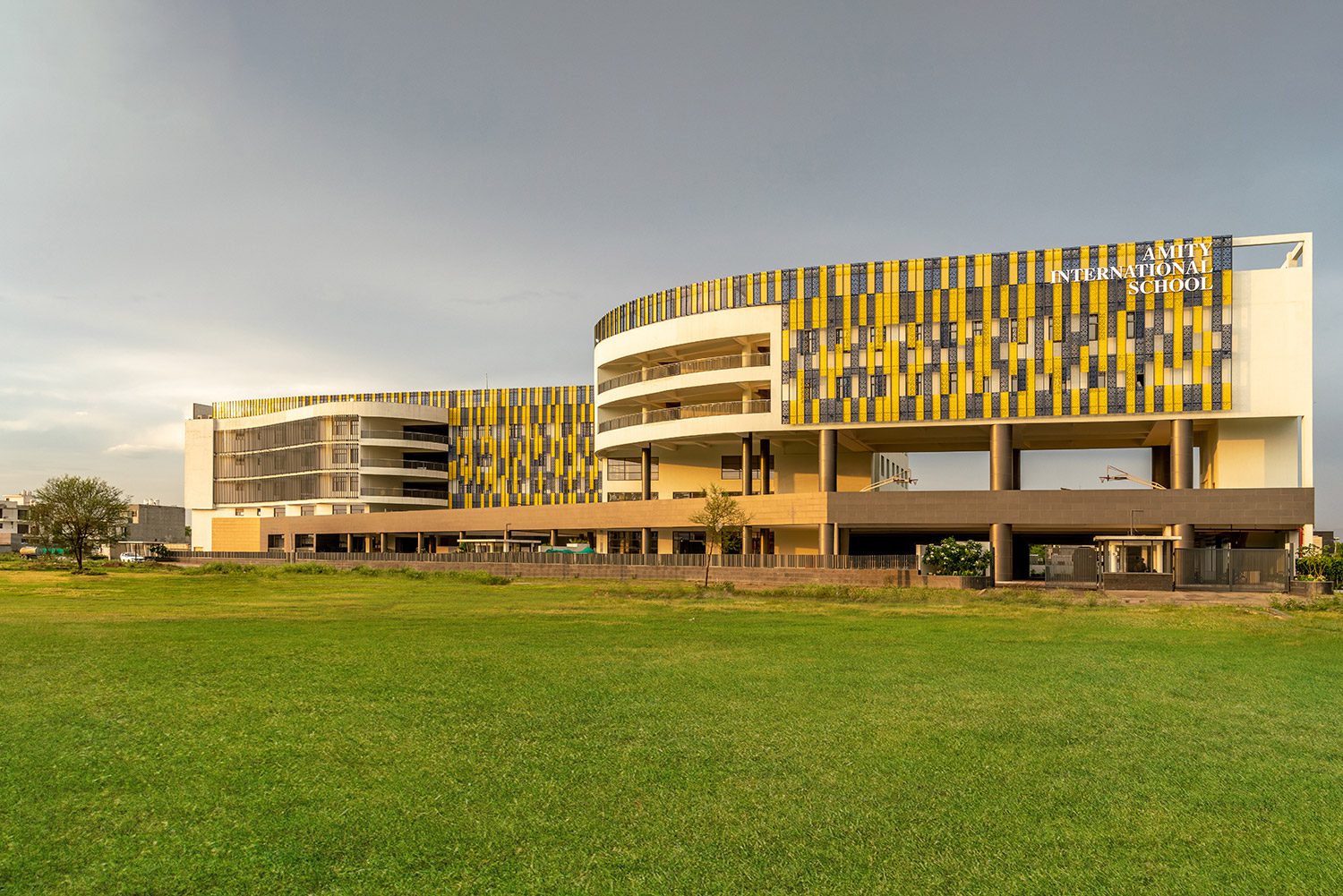
The comprehensive design scheme lays the blueprint for a holistic education – one where physical activity, social interaction, and creative exploration are just as crucial as curricular education.
